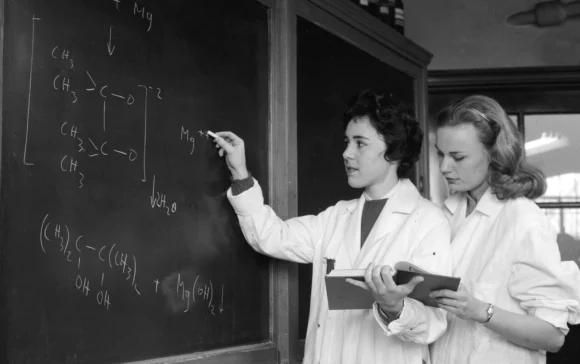Reading Is Maths Real? by Eugenia Cheng, 17 May 2023
Let’s start with an obvious trick question: why does 1 plus 1 equal 2? Well, it often doesn’t. Add one pile of dough to one pile of dough and you get, well, one pile of dough.
This looks like a twisty and trivial point, but it isn’t. Mathematics describes the logical operations of logical worlds, but you can dream up any number of those, and you’re going to need many more than one of them to even come close to modelling the real world.
“Deep down,” writes mathematician Eugenia Cheng, “maths isn’t about clear answers, but about increasingly nuanced worlds in which we can explore different things being true.”
Cheng wants the reader to ask again all those “stupid” questions they asked about mathematics as kids, and so discover what it feels like to be a real mathematician. Sure enough, mathematicians turn out to be human beings, haunted by doubts, saddled with faulty memories, blessed with unsuspected resources of intuition, guided by imagination. Mathematics is a human pursuit, depicted here from the inside.
We begin in the one-dimensional world of real numbers, and learn in what kinds of worlds numbers can be added together in any order (“commutativity”) and operations grouped together any-old-how (“associativity”). Imaginary numbers (which can’t be expressed as digits; think pi) add a second dimension to our mathematical world, and sure enough there are now patterns we can see that we couldn’t see before, “when we were all squashed into one dimension”.
Keep adding dimensions. (The more we add to our mathematical universe, however, the less we can rely on our visual imagination, and the more we come to rely on algebra.) Complex numbers (which have a real part and an imaginary part) give us the field of complex analysis, on which modern physics depends.
And we don’t stop there. Cheng’s object is not to teach us maths, but to show us what we don’t know; we eventually arrive at a terrific description of mathematical braids in higher dimensions that at the very least we might find interesting, even if we don’t understand it. This is the generous impulse driving this book, and it’s splendidly realised.
Alas, Is Maths Real?, not content with being a book about what it is like to be a mathematician, also wants to be a book about what it is like to be Eugenia Cheng, and success, in this respect, leads to embarrassment.
We’ll start with the trivia and work up.
There’s Cheng’s inner policeman, reminding her, as she discusses the role of pictures in mathematics “to acknowledge that this is thus arguably ableist and excludes those who can’t see.”
There are narcissistic exclamations that defy parody, as when Cheng explains that “the only thing I want everyone to care about is reducing human suffering, violence, hunger, prejudice, exclusion and heartbreak.” (Good to know.)
There are the Soviet-style political analogies for everything. Imaginary and complex numbers took a while to be accepted as numbers because, well, you know people: “some people lag behind, perhaps accepting women and black people but not gay people, or maybe accepting gay, lesbian and bisexual people but not transgender people.”
A generous reader may simply write these irritations off, but then Cheng’s desire to smash patriarchal power structures with the righteous hammer of ethnomathematics (which looks for “other types of mathematics” overlooked, undervalued or suppressed by the colonialist mainstream) tips her into some depressingly hackneyed nonsense. “Contemporary culture,” she tells us, “is still baffled by how ancient cultures were able to do things like build Stonehenge or construct the pyramids.”
Really? The last time I looked, the answers were (a) barges and (b) organised labour.
Cheng tells us she is often asked how she comes up with explanations and diagrams that bring clarity “to various sensitive, delicate, nuanced and convoluted social arguments.” Her training in the discipline of abstract mathematics, she explains, “makes those things come to me very smoothly.”
How smoothly? Well, quite early in the book, “intolerance of intolerance” becomes “tolerance” through a simple mathematical operation — a pratfall in ethics that makes you wonder what kind of world Cheng lives in. Cheng’s abstract mathematics may well be able solve her real-world problems — but I suspect most other people’s worlds feel a deal less tractable.

